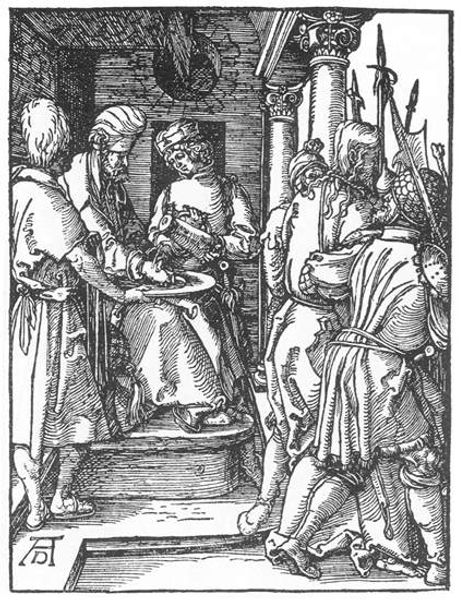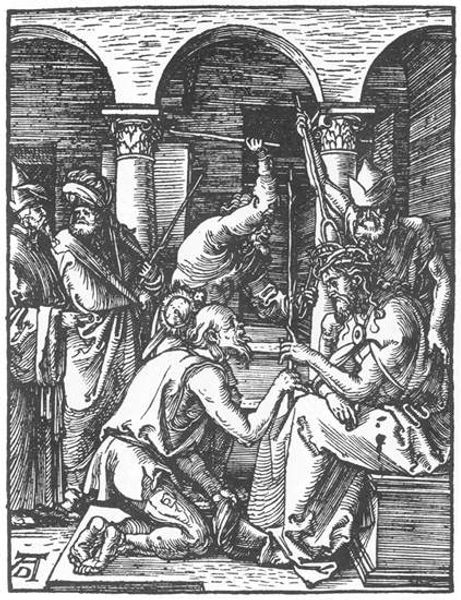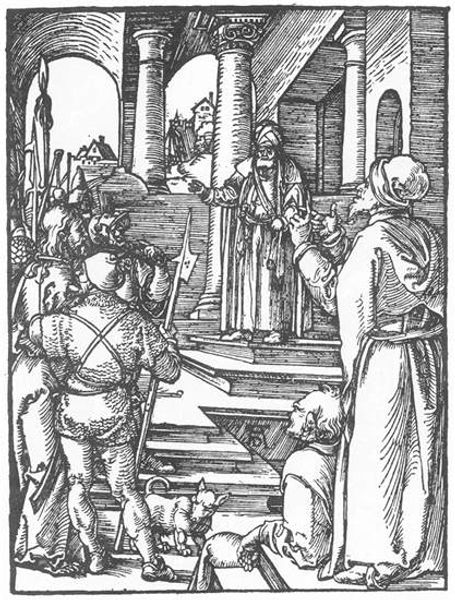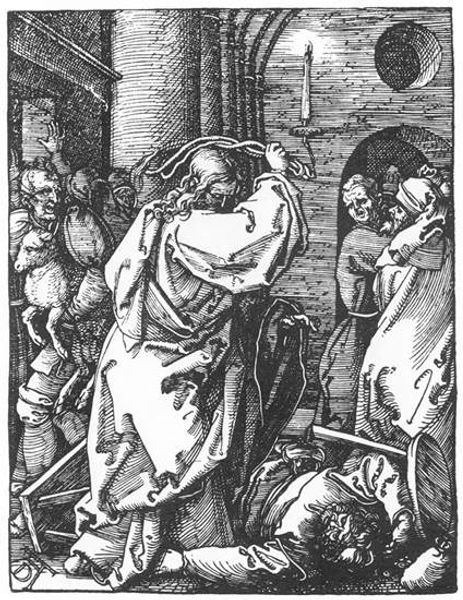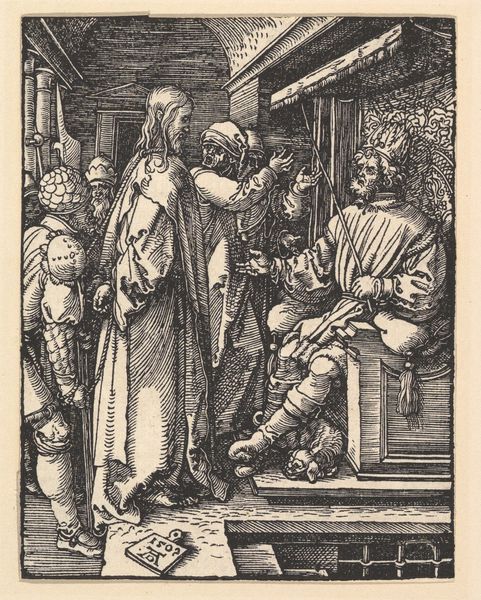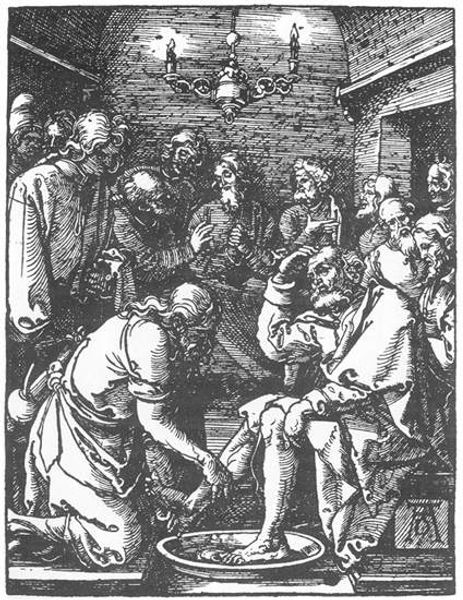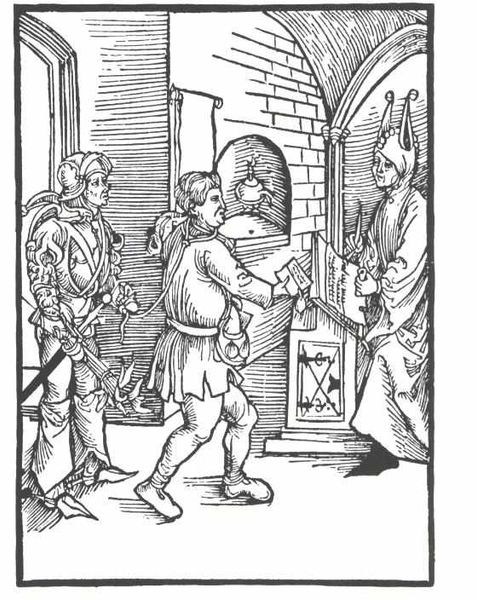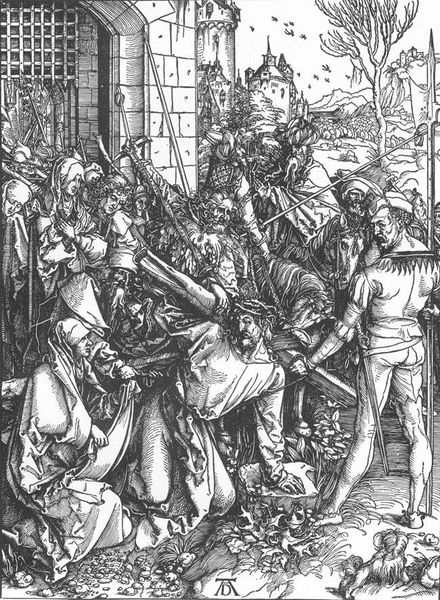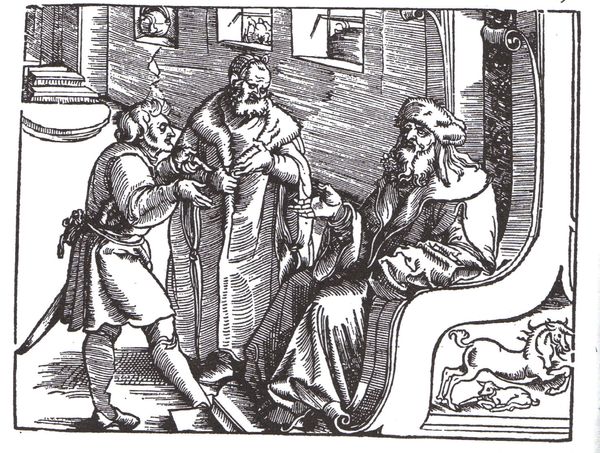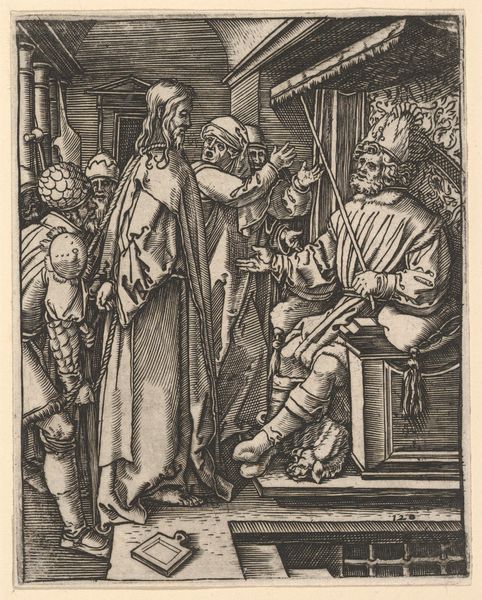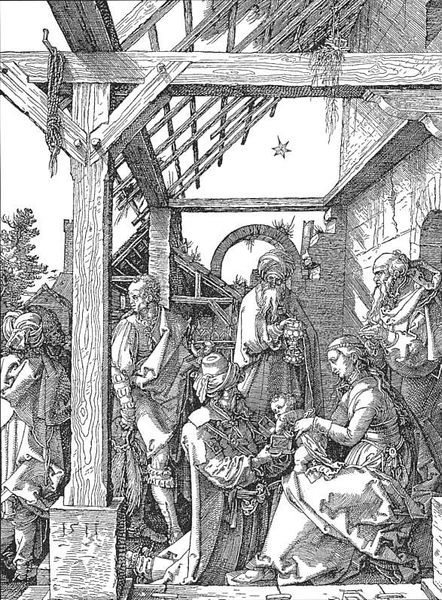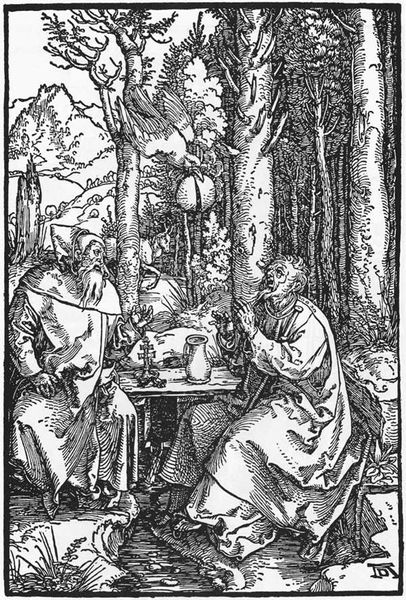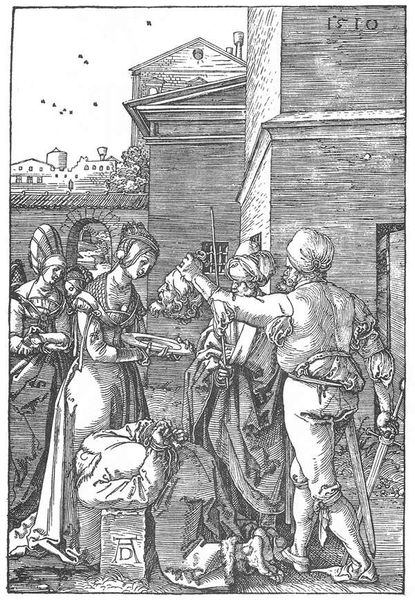
print, engraving
# print
#
figuration
#
jesus-christ
#
christianity
#
history-painting
#
northern-renaissance
#
engraving
#
christ
Copyright: Public domain
Albrecht Dürer’s ‘Christ before Herod’ comes to us from around 1510, and is a woodcut, printed on paper. This wasn’t like painting - where each work is unique - the woodcut was a form of mass production. Carving the image into a block of wood, inking it, and pressing it onto paper, Dürer could create numerous identical prints. Look closely, and you'll see a dense network of lines. These aren't just outlines; they create tone, texture, and depth. Dürer skillfully manipulated the wood, cutting deeper to create darker areas and leaving fine lines to suggest light. It’s incredible to think this level of detail was achieved through laborious hand-carving, a process demanding precision and control. Beyond its aesthetic qualities, the woodcut also served as a means of disseminating information to a wider audience. In a time before photography or widespread literacy, images like these played a crucial role in shaping public perception. The work involved a division of labor, with skilled craftsmen producing the prints. This brings up questions about how these economic and social conditions are influencing the art itself.
Comments
No comments
Be the first to comment and join the conversation on the ultimate creative platform.
